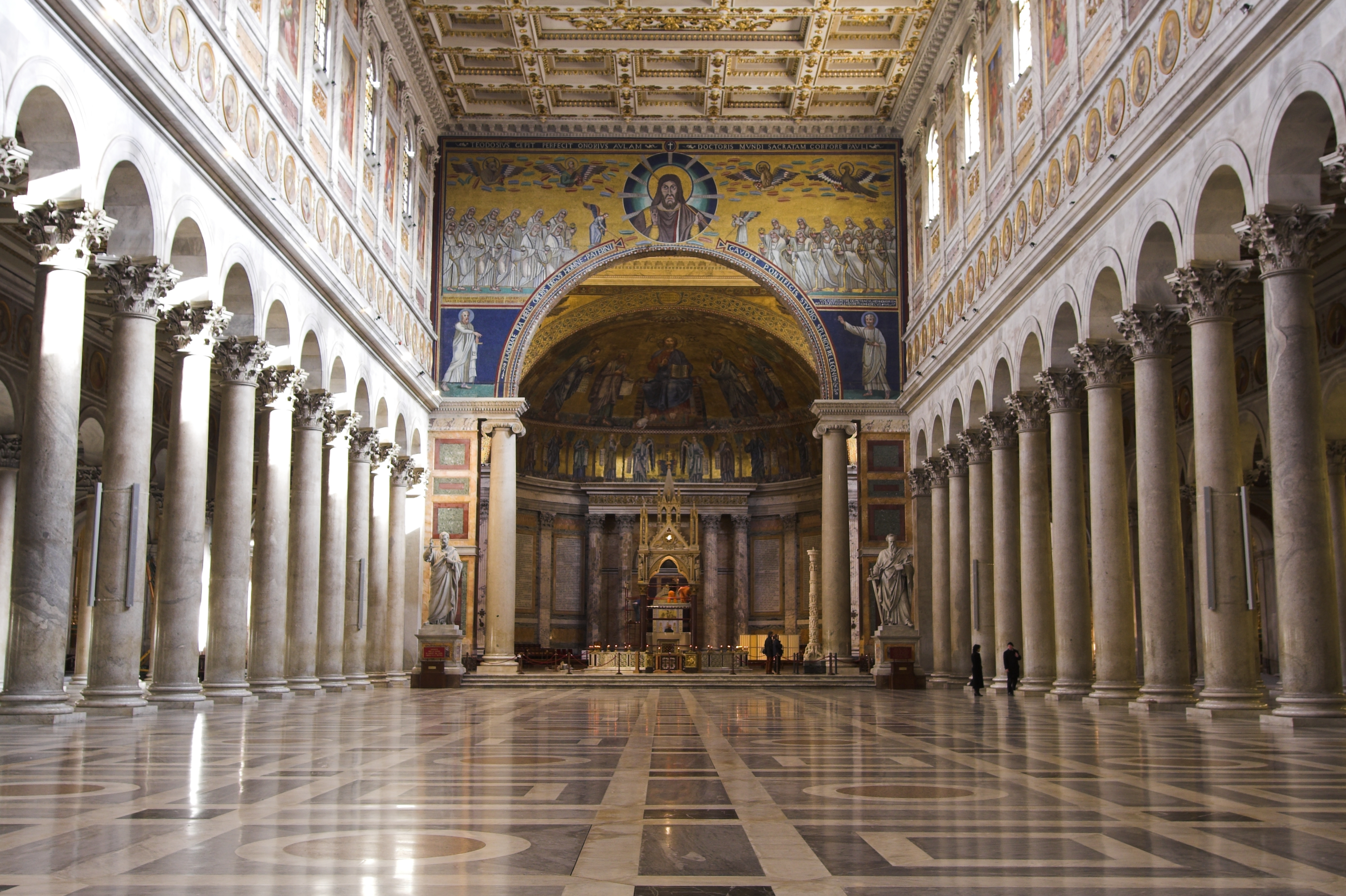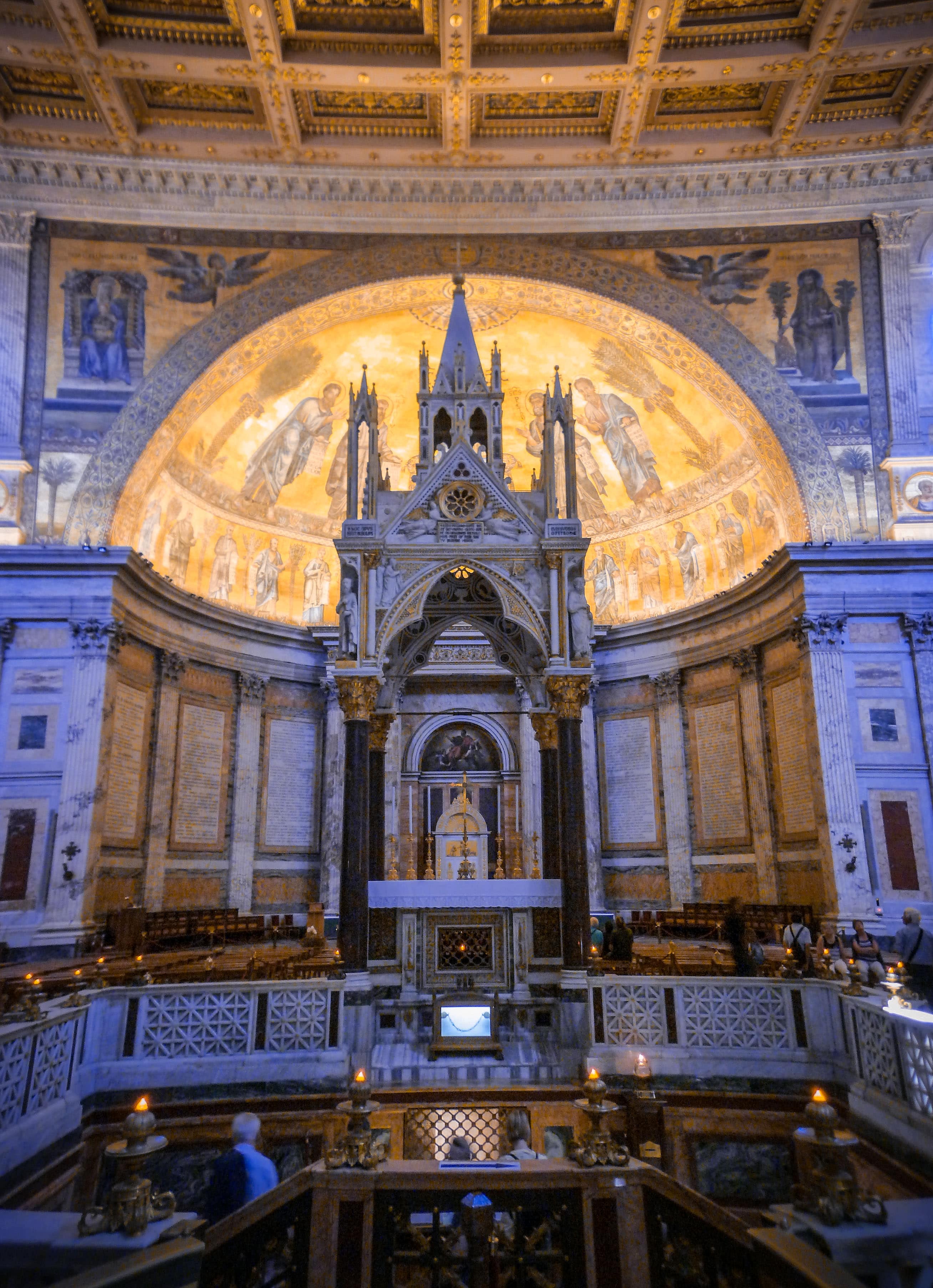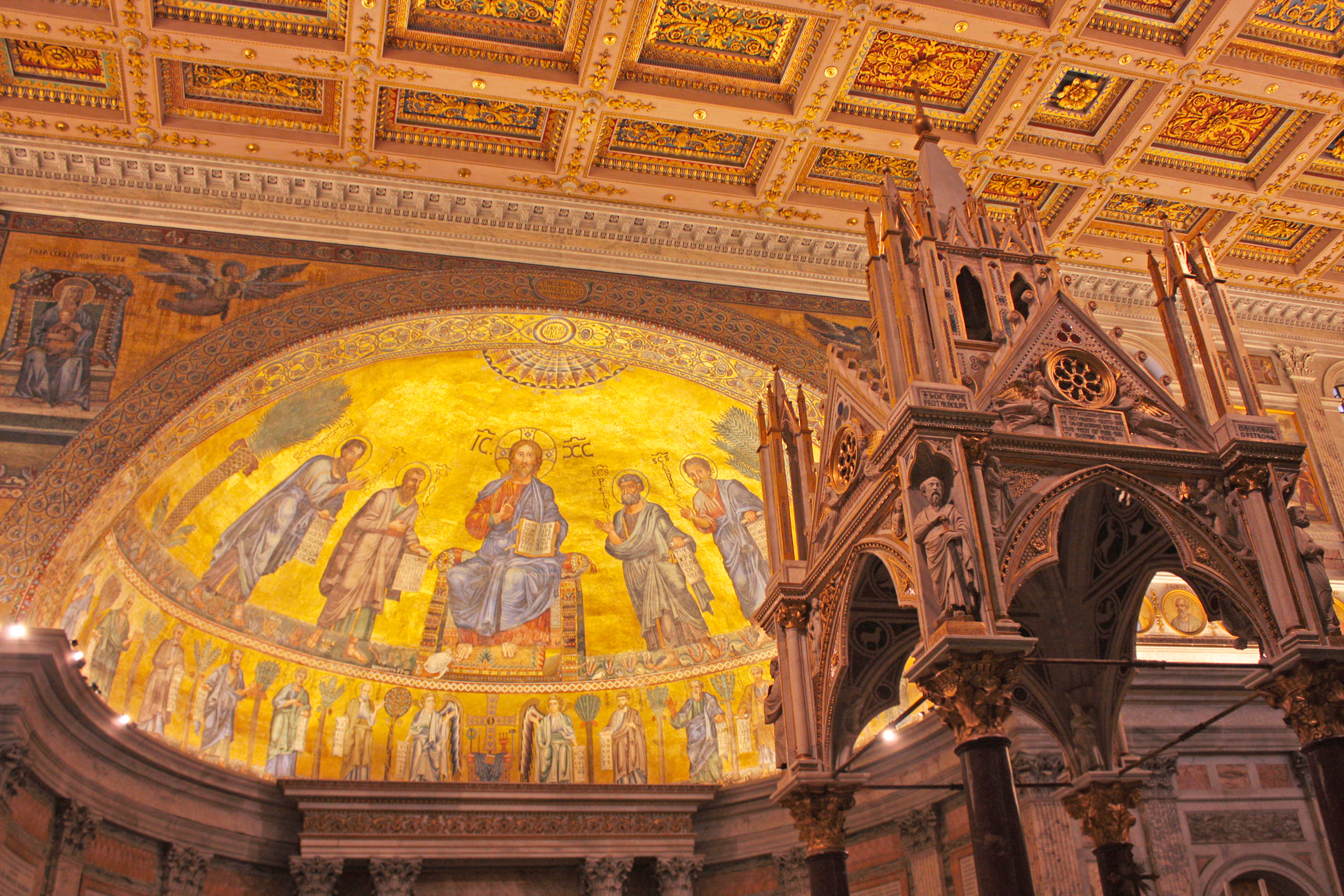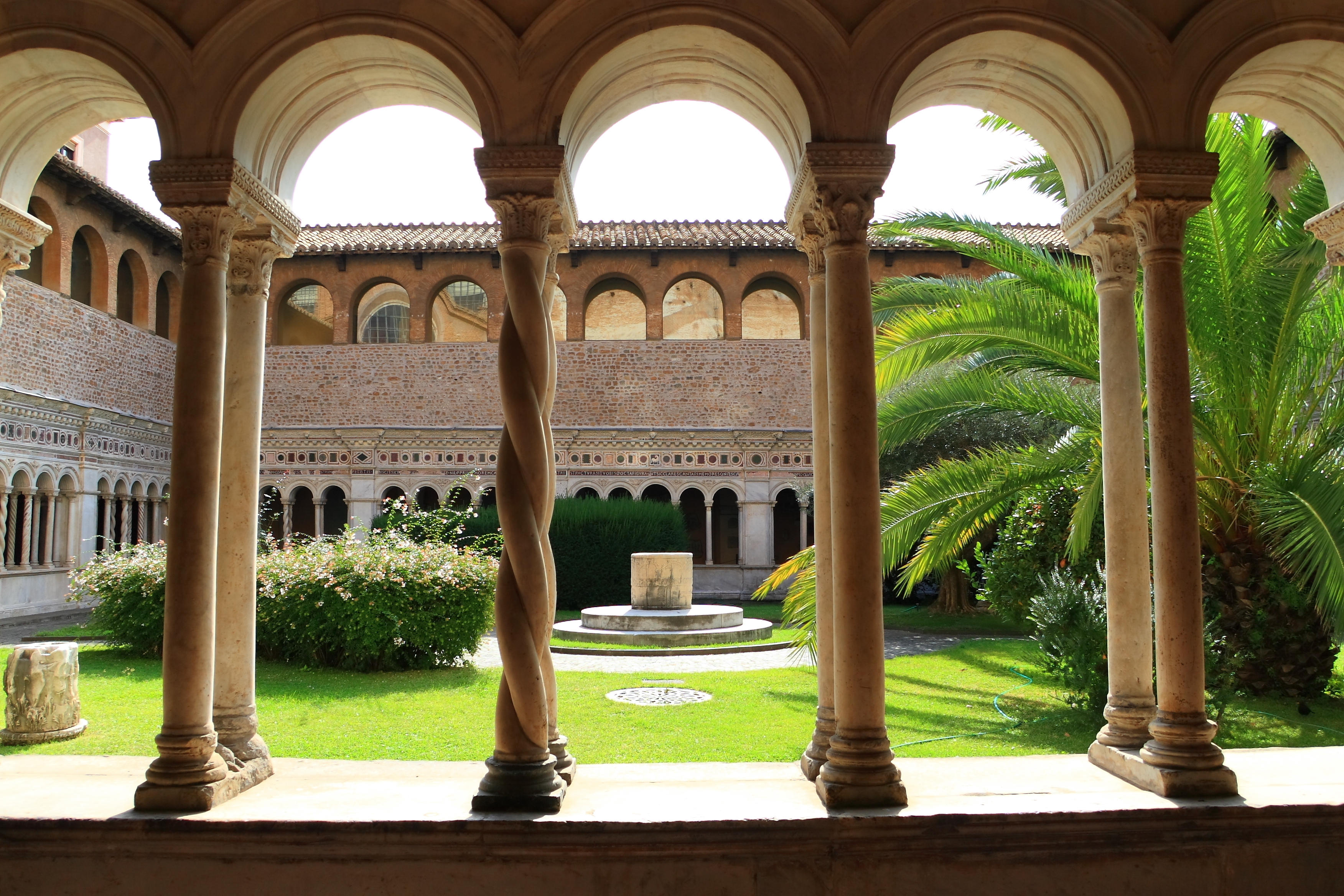IMPORTANT NOTICE: THE VISIT IS NOT PROVIDED BY OMNIA VATICAN&ROME AND IT IS NOT INCLUDED IN THE OMNIA CARD - PLEASE CONTACT THE BASILICA DIRECTLY
The Basilica St. Paul, with its imposing Byzantine structure, is Rome’s largest patriarchal basilica after Saint Peter’s in the Vatican. It was erected in the early centuries of Christianity, in 313, in the place where Saint Paul was buried, when Emperor Constantine promulgated the Edict of Milan that ended the persecution of Christians, allowed them freedom of worship and favoured the building of places of prayer.
Today’s Church is the product of a thorough reconstruction and restoration dating back to the second half of the 19th century as a consequence of the raging fire of July 1823, which destroyed most of the ancient Basilica. Of the ancient glorious construction all that’s left is the transept, the Triumphal Arch, part of the old façade and the Cloister. The new church was consecrated in 1854 during the papacy of Pius IX.
Visiting Hours
Free for children up to the age of 5
Free for disabled visitors and their chaperones
How to get there

Saint Paul Basilica clearly and precisely conveys the mission of the Apostle of the People, who devoted his entire life to the Evangelization of the known world of the time.
The great statue situated in the vast yard preceding the Basilica carries in its hands the Gospel and a Sword; the powerful signs of his evangelising mission and of the force of the Word of God in the hearts of men.
As we enter the Basilica, its vastness and solemnity reminds us of the universal dimension of the Gospel’s mission, to be spread around the world among all peoples.
hide
At the centre of the transept, above the Papal altar, so called because only the Pontiff or someone appointed by him may officiate from there, stands the beautiful ciborium, one of the finest works of sculptural art of Christian Rome, produced by Arnolfo di Cambio in 1285. The ciborium, damaged by the fire, was rebuilt on 19th century columns with some additions.
Today the body of the Apostle is below the Altar of the Confession. A white marble balustrade, built for the 1575 Jubilee, surrounds the altar and supports 28 bronze lamps. A double staircase leads to the Confession.
Recently, after the removal of an old altar, one side of the Saint’s sarcophagus, which had disappeared from view in the course of the events of history, resurfaced. A marble slab with an inscription to the martyr apostle Paul was once incorporated in the tomb and placed flat above the cell. In the course of time this slab was adapted to the needs of the liturgies and of popular devotion. Two holes allowed access to small wells inside the wall where personal objects could be inserted to be turned into relics “by contact”.
Since the early centuries of the Christian era this site has been venerated as the place of his rest awaiting resurrection, the fundamental principle of the christian faith.
hide
At the bottom of the Basilica we find ourselves before the splendid mosaic of the apse.
This 13th century decoration, commissioned by Pope Honorius III, bears witness to the fertility of artistic expression in Rome in a period of refined intellectual vivaciousness during which the Pope commissioned to Venetian mosaic artists the decoration of the apse wanting supplant the rigidity of the Byzantine style.
The Mosaic of the Apse was seriously damaged during the fire in the Basilica and was almost entirely recomposed using only a part of the original tiles.
The centre of the composition is dominated by Christ bestowing a blessing and showing the Book with a Latin phrase on the Final Judgement drawn from Mathew’s Gospel: "Come, ye blessed of my Father, inherit the kingdom prepared for you from the foundation of the world". Prostrate at his feet we see a small Pope Honorius III.
According to a Byzantine tradition the size of figures are proportional to their importance.
On his left Saint Peter is accompanied by his brother the apostle Andrew, whilst on his right we find Saint Paul next to Luke, author of the Acts of the Apostles and witness of the Roman evangelization of Paul.
The other Apostles, together with Mark the Evangelist, disciple of Peter, and Barnabas, Paul’s faith companion, are depicted in the inferior segment.
The Apostles alternate with palm trees, symbols of immortality. The centre of the inferior segment is dominated by an empty throne with at cross in the middle and representing the wait for Christ on the day of the Final Judgment.
Under the apsidal basin we can admire the rich papal cathedra in white marble.
hide
From the right side of the transept we can access the beautiful medieval Cloister recalling the beauty and principles of monastic life. This work was begun by Pietro da Capua, continued by Pietro Vassalletto and completed in 1225.
The Cloister consists of galleries divided by various types of small columns: smooth, octagonal, intertwined, spiral-shaped or inlaid with mosaics. One of the three sides, the one adjacent to the church, is richer and here the columns are more ornate with representations of small monsters and sphinxes on the bases.
This was the typical style of the master marble makers, members of the Cosmati and Vassalletto families, who operated in Rome between the 12th and 13th centuries.
Along the porticos of the Cloister we can capture an extraordinary variety of peculiar motifs among the arches: cats next to baskets of fruit, a triple face, a mask with leaves on the sides, Adam and Eve during the original sin, an eagle grabbing a snake.
All this makes the Cloister of Saint Paul’s one of the most original examples of medieval sculpture.
Under the porticos of the Cloister we also find, scattered around or set in the walls, shrines, inscriptions, bas-reliefs and sarcophagi, most of which come from the adjacent necropolis in the via Ostiense, which can visit outside the Basilica.
The 4th century AD sarcophagus at the centre of this part of the Cloister features on the sides representations of “Marsyas’ contest” and the “flaying of Marsyas” and is of particular interest for its beauty and monumental qualities; “the muses” are depicted on one of the fronts and three boats with winged children playing on the other.
In one corner, towards the left, we find a medieval statue of Pope Boniface IX, elected in 1389.
hide